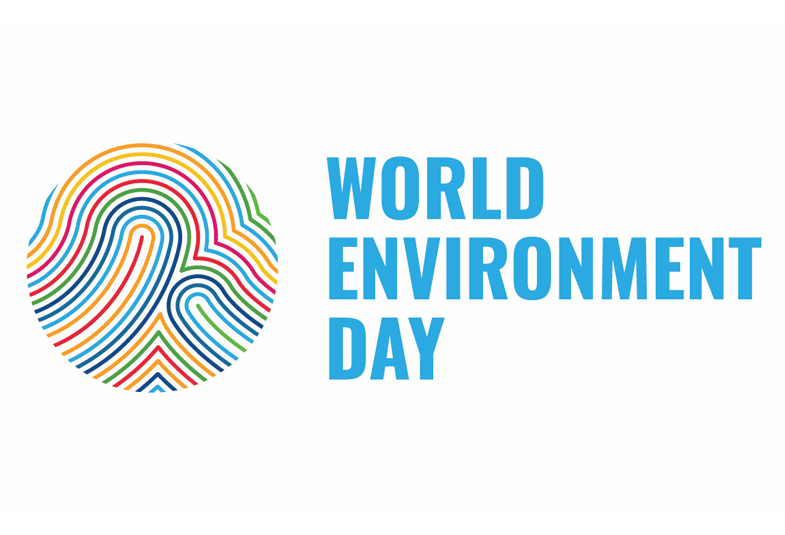What is World Environment Day 2023?
This year’s World Environmental Day (WED) is set to take place on the 5th of June, hosted by Côte d’Ivoire. This year marks a special anniversary of World Environment Day – as noted by the UN below.
This year marks the 50th anniversary of World Environment Day, after it was established by the United Nations General Assembly in 1972. Over the past five decades, the day has grown to be one of the largest global platforms for environmental outreach. Tens of millions of people participate online and through in-person activities, events and actions around the world.
UN Environment Programme
Where do SocEnv fit in?
The Society for The Environment (SocEnv) is a champion of WED in the UK and beyond. SocEnv has a cross-sector reach, bringing together professionals from a wide range of disciplines, giving us a platform to raise awareness of WED and drive real change.
What is the 2023 World Environment Day theme?
The theme chosen for this World Environmental Day is ‘solutions to plastic pollution’.
Join the conversation via #BeatPlasticPollution
So, why is this year’s theme important?
Plastic pollution is regularly in the news due to its terrible consequences on the environment and human and animal health, laid bare by documentaries such as Blue Planet.
To explain more about why this year’s theme is so important, we asked the experts – Chartered Environmentalists – for their insights.
Chartered Environmentalist (CEnv) status is achieved through the dedication and expertise of an environmental professional from their respective field, ranging from: resource management, forestry, ecology, to name just a few. This status sets CEnv apart from others working in their field so they can utilise their specific expertise to lead, advise and work hands-on as practitioners.
Read on to discover the true value of this year’s WED theme and how you can get involved.
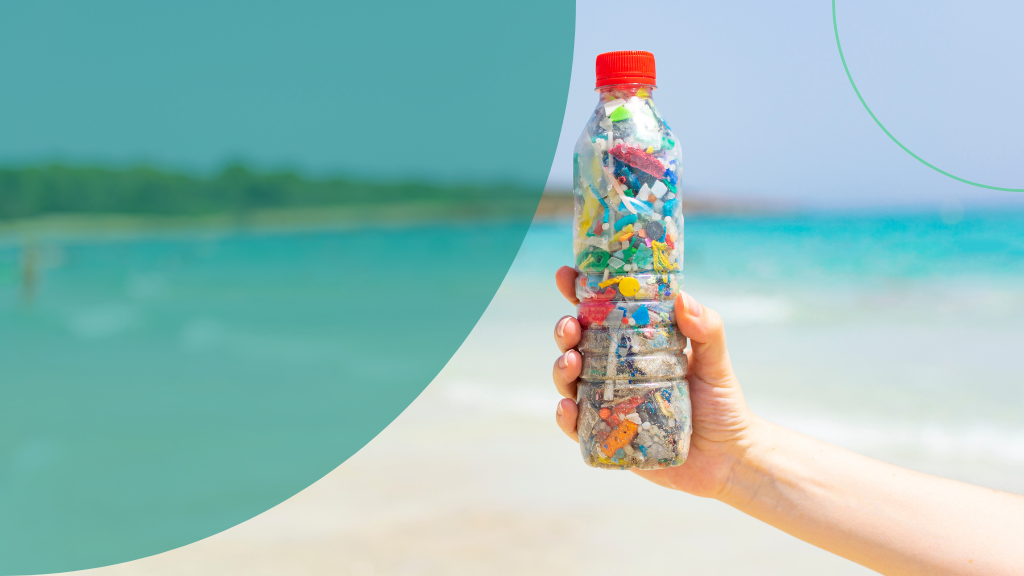
Image above: credit: © Fernando Valero from imágenes de fernando valero via Canva.com
CEnv Insights
Packaging design and production
First up, the view of Tom South CEnv MIMMM who has 13 years’ experience working in the packaging sector:
“The motto ‘Only One Earth’ hits home just as powerfully today as it did 50 years ago, and yet slow progress has been made in the packaging sector especially despite the advancements in technology and materials. Single use plastic packaging is still abundant, images of plastic packaging being collected from our rivers and oceans are commonplace. There is outcry at the damage done to our flora and fauna because of microplastics, yet more and more virgin plastic is produced. Global recycling infrastructure is overwhelmed.
Packaging professionals have an obligation to adopt environmentally sustainable practices, look at innovation to use the vast amounts of waste packaging that is already in circulation and to push for improved and aligned recycling methods.
Collectively we need to educate the next generation at a young age on the damage that has been done and what can be done going forward to contribute to saving this planet. We need to do all we can to keep the spotlight on change for the better otherwise the legacy we leave behind will be one of waste and destruction of the place we all call home.”
Materials innovation
Nanoscientist and innovator Dr Bart Kolodziejczyk OAM, CEnv, CSci, FRSC, CEng, FIET, FRSA, FRAS, FRGS, FIEC, FLS, MAAAS, MIMMM said:
“Nanowaste and plastic waste is something I have been working on for nearly a decade now. While waste from the application of nanotechnology is not as common yet, plastic waste requires urgent intervention. Plastic is amongst the most produced materials today. Plastic products are cheap, easy to manufacture and form to desired shape. They are also robust enough to meet requirements for numerous applications. All these advantageous properties enabled plastic materials to become one of the biggest challenges of our times.
Vast volumes of plastic waste end up in landfills, rivers, and oceans every year, and when exposed to environmental conditions such as solar irradiation and abrasion plastic materials slowly break down releasing micro- and nano-plastic particles. Micro- and nano-plastic has been found in tap water globally, as well as in soil and even human blood. The hazard of this new micro- and nano-pollutants is not yet well understood but can potentially have significant consequences to our health and well-being. Our current water treatment and processing infrastructure is not designed to deal with this new type of pollutant.
Plastic pollution also became a threat to terrestrial and marine life. While many countries are banning the use of single use plastic, we also need to think of and develop remedies and water and soil clean up practices to address the problem. Plastic pollution can have severe consequences and is often mentioned as one of the biggest existential threats after climate change and biodiversity loss. We need to produce more scientific evidence which will then develop solutions and drive regulatory interventions.”
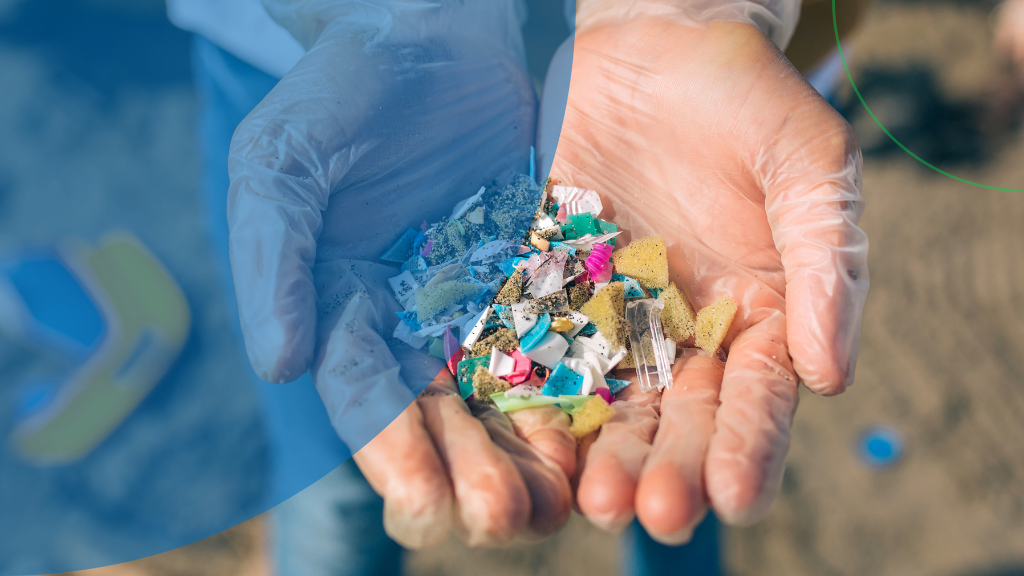
Image above: credit: © doble-d from Getty Images via Canva.com
Recycling and recovery
Working at the forefront of the resource management sector, Dr. Adam Read CEnv, Chief External Affairs and Sustainability Officer at SUEZ Recycling & Recovery UK, gives his insights:
“The theme for this year’s World Environment Day, ‘solutions to plastic pollution’, is a challenge to the industry that couldn’t have come at a more pressing time. There is an urgent need globally to address the threat of plastics pollution, and the only way we will do so is through collaboration and ambitious action.
It’s imperative that Governments and businesses come together to tackle the impacts that plastic pollution is having on a global scale, by being bold with policy and being open to trying new and innovative approaches to complex issues.
It’s important to note that plastic packaging is not the sole problem here, the issue comes when the consumer takes that packaging home and doesn’t know if or how it can be recycled. We’re calling for better labelling, clearer messaging and simpler materials on the marketplace to make recycling easier.
It’s easy to look at the waste management companies and blame them for not providing the infrastructure, but without robust policies in place and behaviour changes from the consumer, the problem becomes harder to address. There is a long way to go, but by working together and sharing knowledge we can make progress at a much faster rate.”
Forestry
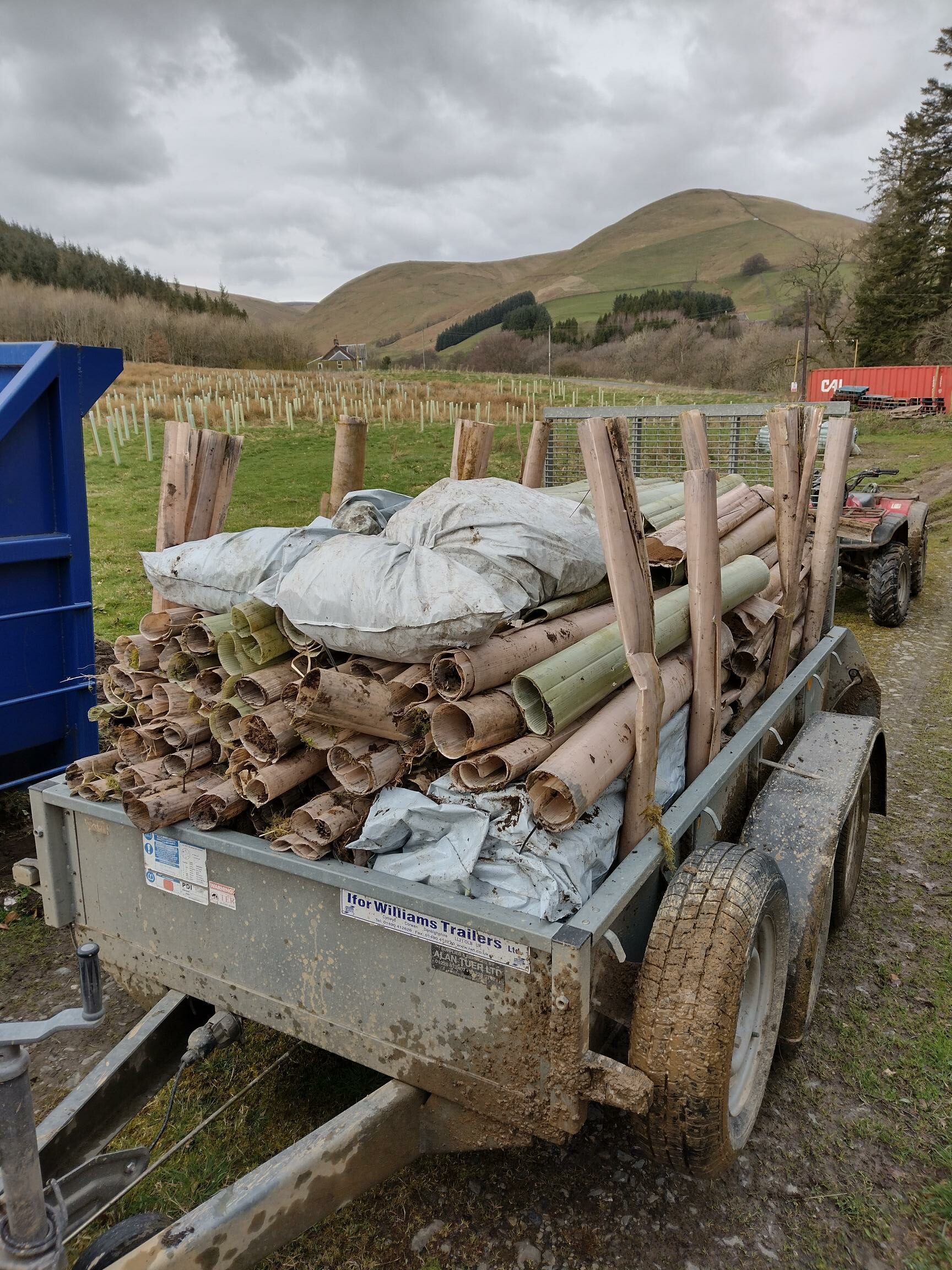
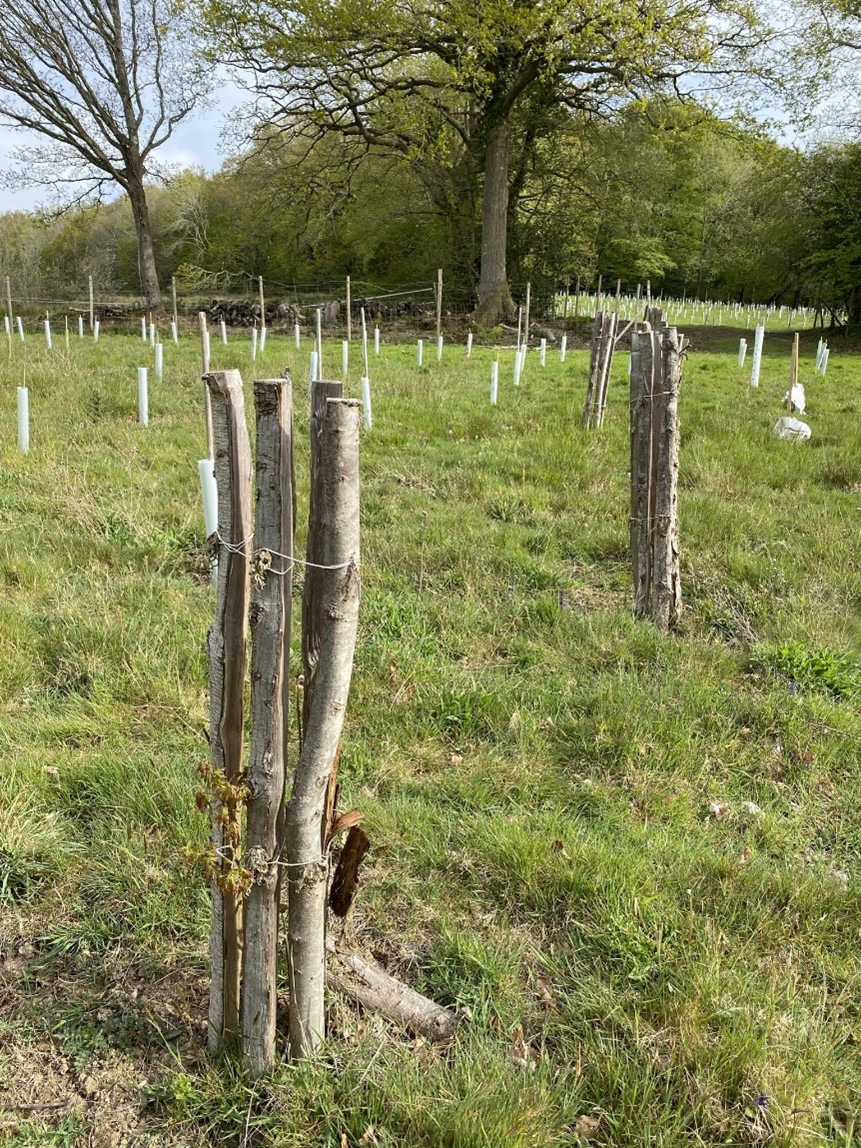
Tilhill stock images above: Left – redundant plastic tree shelters being removed for recycling. Right – trialling sweet chestnut and wool as an alternative to traditional plastic tree guards.
Nicola Abbatt CEnv, MIEMA, MRICS, CMIOSH, Environment & Sustainability Manager at Tilhill, said:
“Protecting the environment and contributing to solutions to deliver a sustainable future is at the heart of my career.
Helping found the Forest Plastics Working Group and collaborating with like-minded individuals across the forestry sector has opened the door to animated debate on good practice, and solutions to reducing plastic use in forestry. Of course, plastic is everywhere we look today: in woodland management we find its use in deliveries of trees in plastic bags and trees for planting, through to packaging of sawn timber sent to retail. Agricultural value chains used 12.5 million tonnes of plastic products in 2019 and while forestry formed just a small percentage, every industry has a part to play in finding solutions.
The FAO’s assessment of agricultural plastics and their sustainability ‘A Call for Action’ 2021 highlighted the importance of impetus in collaborating to find solutions, with one of the ‘underestimated threats’ being the impact of plastic on our soils. While powerful images of plastic in the marine environment are common-place, emerging commentary and studies identify that risks of plastic pollution in our soils pose a bigger problem. We must protect and improve our environment for current and future generations.
Many may be familiar with the concept of planetary boundaries: back in 2015 we had pushed boundaries over limits that humanity can thrive for climate change, biodiversity loss and shifts in nutrient cycles and land use; into areas of high risk for humanity. Last year scientists concluded that we had now breached the planetary boundary for ‘novel entities’ which includes plastic. Breaching these boundaries increases risk of irreversible environmental changes. Solutions for plastic has never been so important in the global sustainability arena.”
Consumer plastic use
Kath Norgrove BSC (Hons) FCIWEM C.WEM CEnv, Chair of Sustainable Bridgnorth and Coordinator of the Bridgnorth Campaign to #PreventPointlessPlastic, said:
“This year’s theme highlights a key global problem that affects us all, including marine and land wildlife. Every year 8 million tonnes of plastic ends up in the oceans; equating to one bin lorry load every minute.
We live in a consumer-driven, throwaway society; more than half the plastic ever produced has been in the last fifteen years. Nearly half the plastic produced is used just once and thrown away. This ‘single-use plastic’ impacts our rivers, land, and oceans. As a non-biodegradable material, it breaks down into smaller particles (micro-plastics), which are eaten by small marine organisms, entering the food chain.
The Government needs to step up and make bold decisions to push extended producer responsibility and create a circular economy which reduces and reuses plastic more sustainably. However, beyond these necessary policy changes, ordinary people can make a big difference. Since late 2018, a ‘Prevent Pointless Plastic’ campaign in our local district has raised awareness and helped people cut plastic usage and pollution. Collectively making small changes using refillable water bottles, reusable coffee cups, local refill shops and veg box schemes all make an impact. As Anne Marie Bonneau said: “We don’t need a handful of people doing zero waste perfectly. We need millions of people doing it imperfectly”.”
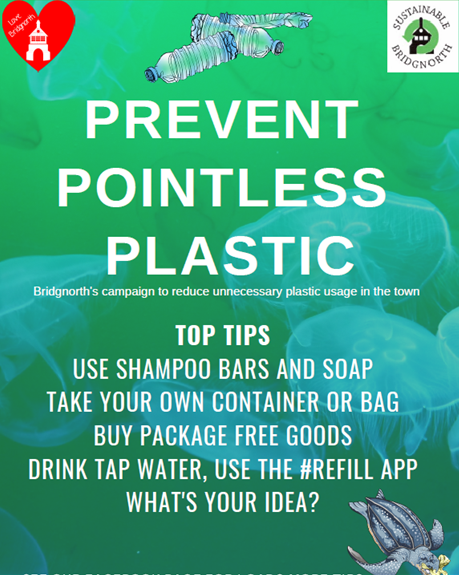
Image above: poster for launch of Sustainable Bridgnorth’s Prevent Pointless Plastic campaign, 2019.
